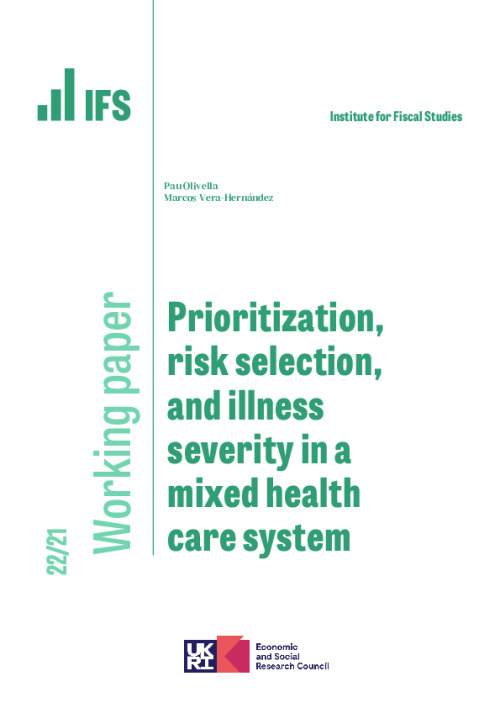Downloads
We study the link between illness severity and the use of public health care services by the privately insured under a public health system. Our theoretical model shows that this relationship will depend on the prioritization established by the public health authorities, the cost of waiting and the private sector's risk selection behavior. In our empirical exercise, based on the British Household Panel Survey data, we find the consistent pattern that both the most severe cases and the least severe cases are more likely to be treated under the public system, leading to a U-shaped relationship between severity and public use. As our theoretical model points out, this is not necessarily a consequence of risk selection by private health providers, but it could be just a consequence of prioritization by the public sector.
Authors

Research Fellow University College London
Marcos is a Research Fellow at IFS, an Affiliate at the Rural Education Action Program and a Professor of Economics at the University College London.

Pau Olivella
Working Paper details
- DOI
- 10.1920/wp.ifs.2022.2122
- Publisher
- Institute for Fiscal Studies
Suggested citation
Olivella, P and Vera-Hernandez, M. (2022). Prioritization, risk selection, and illness severity in a mixed health care system. London: Institute for Fiscal Studies. Available at: https://ifs.org.uk/publications/prioritization-risk-selection-and-illness-severity-mixed-health-care-system (accessed: 23 April 2024).
More from IFS
Understand this issue

Should we worry about government debt?
11 April 2024

Spring Budget 2024: What you need to know
7 March 2024

The NHS waiting list: when will it come down?
29 February 2024
Policy analysis

Regional variation in earnings and the retention of NHS staff in Agenda for Change bands 1 to 4
10 April 2024

Recent trends in and the outlook for health-related benefits
19 April 2024

4.2 million working-age people now claiming health-related benefits, could rise by 30% by the end of the decade
19 April 2024
Academic research

The consequences of miscarriage on parental investments
22 March 2024

The menopause "penalty"
18 March 2024

Willingness to pay for improved public education and public healthcare systems: the role of income mobility prospects
14 March 2024
